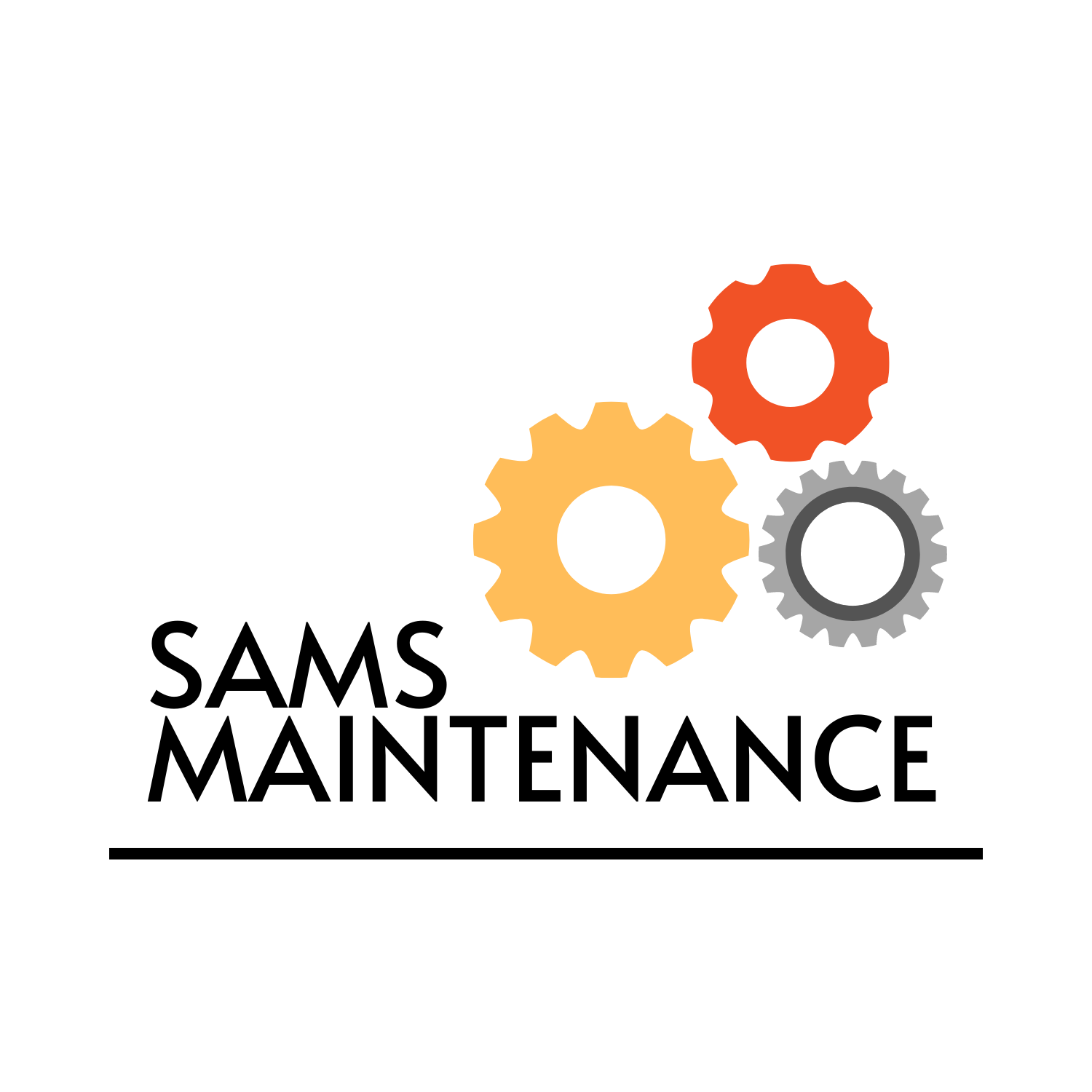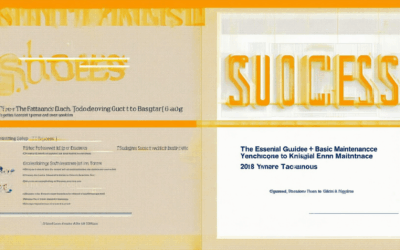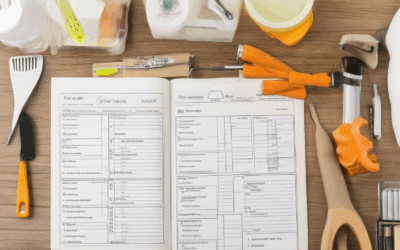Homeownership comes with its fair share of challenges, especially when it comes to maintaining a property. Minor issues can quickly escalate if left untreated, leading to costly repairs down the line. For many homeowners, keeping up with routine maintenance feels overwhelming, often leading to neglect. However, adopting a proactive approach can make all the difference. Enter the concept of the 1% Rule—a simple yet effective strategy for home maintenance that encourages addressing small problems before they become major issues. By prioritizing minor repairs and preventive measures, homeowners can extend the lifespan of their property and enjoy greater peace of mind. This article delves into the essentials of creating a simple home repair checklist, exploring how the 1% Rule can enhance efficiency, and providing practical tips for maintaining your home in top shape year-round. Whether you’re a seasoned homeowner or new to the responsibilities, this guide offers valuable insights and tools to help you stay ahead of potential issues, ensuring your home remains a safe and comfortable haven for years to come.
Key Takeaways
- Regularly utilizing a maintenance checklist enhances home efficiency and prevents costly breakdowns.
- A well-structured checklist includes daily, weekly, monthly, and quarterly tasks to ensure consistent upkeep.
- Essential tasks such as checking fluid levels, inspecting belts, and testing switches are critical for system functionality.
- Examples like vehicle maintenance, HVAC checks, and appliance care demonstrate comprehensive coverage.
- Proper tools and safety precautions are vital for effective home maintenance.
- Adhering to a maintenance schedule saves money and boosts productivity.
- Preventing minor issues before they escalate is key to long-term cost savings.
- Staying proactive with regular checks ensures your home remains in top shape.

Understanding the 1% Rule for Home Maintenance
The 1% rule for home maintenance is a simple yet effective strategy to budget for unexpected repair and improvement costs. Here’s a breakdown of how it works:
- Calculate 1% of Your Home’s Value: Determine 1% of your home’s current appraised value. For instance, if your home is valued at $250,000, you would set aside $2,500 annually.
- Annual Budgeting:** Set this amount aside each year to cover unforeseen expenses like roof repairs, furnace replacements, or painting.
- Adjust for Inflation and Needs:** Review your budget annually to account for inflation and changing home needs, such as remodeling or new appliance installations.
- Long-Term Benefits:** Over time, this strategy helps maintain your home’s value and ensures you’re financially prepared for emergencies without resorting to high-interest loans.
To implement this rule effectively:
- Savings Strategy:** Consider opening a dedicated savings account for home maintenance and automate monthly contributions.
- Track Expenses:** Keep a record of all maintenance-related purchases to evaluate and adjust your budget as needed.
- Start Small if Necessary:** If 1% isn’t feasible initially, begin with a smaller amount and gradually increase it to meet the target.
This approach emphasizes preparedness and financial stability, allowing you to handle home maintenance issues confidently and sustainably.
Creating a Simple Home Maintenance Schedule
Maintaining your home requires consistent effort to ensure it stays in great shape. Here’s a step-by-step guide to creating a simple yet effective home maintenance schedule:
Monthly Tasks
- Check HVAC System: Inspect filters and vents for cleanliness and blockages.
- Inspect Plumbing: Look for leaks near sinks and pipes.
- Examine Roof: Check for missing shingles or damage.
- Paint and Stain Check: Ensure surfaces are in good condition.
- Prune Trees/Bushes: Keep greenery trimmed for health.
- Clean Gutters: Remove debris and check for damage.
- Foundation Inspection: Look for cracks or signs of movement.
- Window/Door Check: Inspect for wear and drafts.
- Appliance Check: Test stove, fridge, and water heater function.
- Smoke/CO Detectors: Ensure they’re working and batteries are fresh.
- Electrical Systems: Check switches, outlets, and cords.
- Garden Care: Mow, fertilize, and water lawn; trim grass and edges.
Quarterly Tasks
- Oven/Rangehood Cleaning: Deep clean to maintain function.
- Washing Machine/Dryer Vent: Clean vent pipes and check for blockages.
- Chimney Inspection: Look for creosote buildup and structural issues.
- Garage Door Opener: Test functionality and adjust as needed.
Seasonal Tasks
- Winter Prep: Clear gutters, move plants indoors, prepare pipes for freezing.
- Spring Cleaning: Pressure wash decks/patios, perform a full house inspection.
- Summer Storm Prep: Secure outdoor furniture, check AC unit.
- Fall Prep: Rake leaves, check furnace operation.
Annual Tasks
- Replace Filters: Air, furnace, and water filter replacements.
- Roof Inspection: Professional assessment for damage.
- Chimney/HVAC Check: Professional inspection for safety and efficiency.
- Electrical Update: Replace outdated wiring and GFCI units.
- Insurance Review: Ensure coverage meets current needs.
By following this schedule, you’ll stay ahead of potential issues and maintain your home’s value. Remember to consult professionals for tasks requiring specialized skills!

General House Maintenance
General house maintenance refers to the routine tasks and activities required to keep a residential property in good condition. These tasks are essential for preserving the value of the home, ensuring safety, and preventing costly repairs. Below is a comprehensive guide to various aspects of house maintenance.
Key Components of House Maintenance
- Safety Checks: Regularly inspect for potential hazards such as loose floorboards, exposed wires, or damaged railings. Ensure smoke detectors and carbon monoxide alarms are functioning properly.
- Cleaning: Maintain cleanliness in all areas of the house, including bathrooms, kitchens, and living spaces. Dusting, vacuuming, and mopping floors regularly helps prevent dirt buildup and allergens.
- Rodent Control: Inspect for signs of pests like mice or rats and seal entry points to prevent infestations. Use traps or professional services as needed.
- Garbage Disposal: Clean and maintain the garbage disposal unit regularly to prevent clogs and odors. Run it periodically with hot water to flush out debris.
- Gardening and Landscaping: Trim trees and bushes, mow the lawn, and maintain flower beds to keep the exterior of the house looking neat and healthy.
- Asset Repairs: Address minor repairs immediately, such as fixing leaky pipes, replacing worn-out caulking, or repairing loose shingles on the roof.
Seasonal Maintenance Tips
Seasonal maintenance plays a crucial role in preserving your home’s integrity. Here are some tips tailored to different times of the year:
Spring Maintenance
- Check for damage caused by winter weather, such as cracked sidewalks or roof damage.
- Clean gutters and downspouts to ensure proper drainage during rainy seasons.
- Inspect windows and doors for cracks or drafts and seal them if necessary.
Summer Maintenance
- Test air conditioning units to ensure they are working efficiently before the hot weather arrives.
- Examine the foundation for cracks or shifts and repair as needed.
- Protect outdoor furniture and plants from extreme heat and pests.
Winter Maintenance
- Prepare pipes for freezing temperatures by insulating them or allowing water to flow gently to prevent bursting.
- Check for drafts around windows and doors and consider upgrading to more efficient models.
- Clear snow and ice from walkways and roofs to prevent slips and structural stress.
Monthly Maintenance Tasks
Establishing a monthly maintenance routine can help keep your home in great shape. Here are some tasks to include:
- Inside the Home: Vacuum and mop floors, clean bathrooms, and check for leaks under sinks or in bathtubs.
- Kitchen: Wipe down countertops, clean appliances, and check expiration dates on food items.
- Exterior: Power wash decks, fences, and siding to remove dirt and mildew. Inspect for peeling paint and repaint as needed.
- Yard: Mow the lawn, trim grass edges, and prune trees or shrubs that may have grown too large.
Long-Term Maintenance Planning
Planning ahead for major maintenance tasks can save you time and money in the long run. Consider the following:
- Roof Inspection: Have your roof inspected annually to check for missing shingles, curling tiles, or other signs of wear.
- HVAC System: Schedule regular tune-ups for your heating, ventilation, and air conditioning systems to ensure optimal performance and energy efficiency.
- Plumbing Systems: Inspect pipes for leaks or corrosion and replace old fixtures to reduce water waste and improve functionality.
- Electrical Systems: Test circuit breakers and ensure all electrical outlets are functioning properly. Consider upgrading older wiring for safety and convenience.
Energy Efficiency and Security
As part of your maintenance routine, don’t overlook energy efficiency and home security:
- Upgrade to Energy-Efficient Appliances: Replace outdated appliances with newer, more efficient models to lower utility bills.
- Install Smart Home Devices: Use smart thermostats, locks, and cameras to enhance security and convenience while reducing energy usage.
- Regularly Service HVAC Units: Clean or replace filters and ensure your system is running efficiently to maintain indoor air quality and comfort.
Conclusion
Maintaining your house requires consistent effort and attention. By addressing small issues before they become major problems, you can extend the life of your home and ensure it remains a safe and comfortable place to live. Prioritize regular inspections, keep up with routine tasks, and invest in upgrades when necessary. A well-maintained home not only enhances your quality of life but also increases its resale value over time.

What is the Maintenance Checklist?
A maintenance checklist is a crucial tool for ensuring that machinery, vehicles, or properties are maintained properly and consistently. It serves as a guide to help individuals and organizations perform routine checks and tasks to keep systems functioning optimally. Regular maintenance helps prevent unexpected breakdowns, extends equipment lifespan, and ensures safety.
Components of a Good Maintenance Checklist
- Frequency of Tasks
- Daily checks
- Weekly inspections
- Monthly services
- Quarterly reviews
- Annual overhauls
- Specific Steps for Each Task
- Check fluid levels (oil, coolant, etc.)
- Inspect belts, hoses, and cables
- Test switches and controls
- Examine for wear and tear
- Clean or lubricate moving parts
- Tools Required
- Wrenches, screwdrivers
- Multimeter or battery tester
- Safety glasses and gloves
- Flashlight or magnifying glass
- Safety Precautions
- Turn off power sources before working
- Wear protective gear
- Follow manufacturer guidelines
- Secure loose items
- Examples of Maintenance Checklists
- Vehicle Maintenance : Oil changes, tire pressure checks, brake inspections, and battery tests.
- HVAC System : Filter cleaning, duct inspection, and thermostat adjustment.
- Appliance Maintenance : Refrigerator defrosting, oven cleaning, and filter replacement.
By following a well-structured maintenance checklist, you can ensure that your equipment runs smoothly and lasts longer. Regular maintenance also contributes to overall productivity and cost efficiency. For more detailed guides and resources, visit Sams Maintenance to discover expert tips and step-by-step instructions tailored for your needs.
What Should Be Included On Your Daily Maintenance Checklist?
Here’s a detailed breakdown of what should be included in your daily maintenance checklist:
- Cleaning Tasks
- Dust furniture, shelves, and surfaces.
- Vacuum carpets and rugs.
- Wipe down windows and mirrors.
- Clean bathtubs, showers, and toilets.
- Scrub microwave and oven interiors.
- Check for food particles in the kitchen appliances.
- Bathroom and Kitchen Checks
- Inspect under sink and toilet for plumbing leaks.
- Clean and sanitize the bathroom fixtures.
- Check the kitchen sink for leaks and ensure the dishwasher is functioning properly.
- Clean the microwave and oven interiors.
- Appliance Maintenance
- Check the washing machine and dryer for lint buildup.
- Test smoke detectors and carbon monoxide detectors.
- Ensure all small appliances are clean and functioning correctly.
- Window and Door Checks
- Look for gaps or cracks around windows and doors.
- Ensure screens are intact to prevent pests and drafts.
- Check for peeling paint or loose caulking.
- Roof and Exterior Checks
- Inspect the roof for missing shingles or damaged areas.
- Check for loose siding or fascia boards.
- Trim overhanging tree branches to prevent damage.
- Yard Work
- Trim bushes and trees to maintain visibility and prevent encroachment.
- Clear gutters and downspouts to prevent blockages and water damage.
- Interior Checks
- Declutter and organize living spaces.
- Turn off unnecessary lights and unplug unused appliances to save energy.
- Water and Plumbing Checks
- Check the water heater for leaks or corrosion.
- Test the sump pump to ensure it’s functioning properly.
- Look for foundation cracks or uneven ground.
- Fireplace and chimney Checks
- Inspect the fireplace for damage or blockages in the chimney.
- Ensure venting systems are free of obstructions.
- Weekly Property Walk-through
- Conduct a full inspection of the property to identify any potential issues.
- Ensure all locks and hinges are secure.
- Check for signs of pests or rodents.
By incorporating these tasks into your daily maintenance checklist, you’ll ensure your home remains in great shape and reduce the risk of costly repairs down the line.

House Maintenance To Do List
Regular house maintenance is essential to ensure your home remains in great condition and avoids costly repairs. Here’s a comprehensive guide to what you should be doing:
- Roof Inspection : Check for missing shingles, cracks, or sagging parts. Inspect the roof at least once a year.
- Gutter Cleaning : Clean out leaves and debris to prevent water buildup. Do this every spring and fall.
- HVAC System Maintenance : Replace filters monthly, inspect vents for blockages, and ensure air ducts are clean. Check once per season.
- Appliance Care : Replace refrigerator and dishwasher filters every few months. Clean stove burners and descale the dishwasher as needed. Maintain water softener systems regularly.
- Landscape Maintenance : Trim grass and weeds, prune trees, and fertilize. Plan treatments for spring and fall.
- Water System Checks : Look for leaks under sinks and around pipes. Test water pressure annually and consider water softening.
- Fire Safety : Check smoke detectors and replace batteries. Inspect fire extinguishers and review escape routes.
- Electrical Systems : Test GFCI sockets and check circuit breakers. Inspect outlets for warmth and ensure bathroom/kitchen ones are dry.
- Plumbing Maintenance : Clear slow drains and check for leaks. Flush water heaters annually and inspect under sinks.
- Window and Door Checks : Clean window tracks, check for drafts, adjust weatherstripping, and lubricate hinges and locks.
- Attic and Basement Inspections : Look for moisture issues and inspect for leaks. Store items properly to prevent damage.
- Pest Control : Monitor for pests monthly and seal entry points promptly.
- Security System Tests : Ensure alarms and cameras are functional. Keep door locks secure and update passwords regularly.
- Seasonal Tasks : Prepare for winter by clearing gutters and insulating pipes. Conduct spring cleaning and fall yard work.
By staying proactive with these tasks, you’ll maintain your home’s health and longevity. Tackle them one at a time or create a routine to cover everything throughout the year.




0 Comments